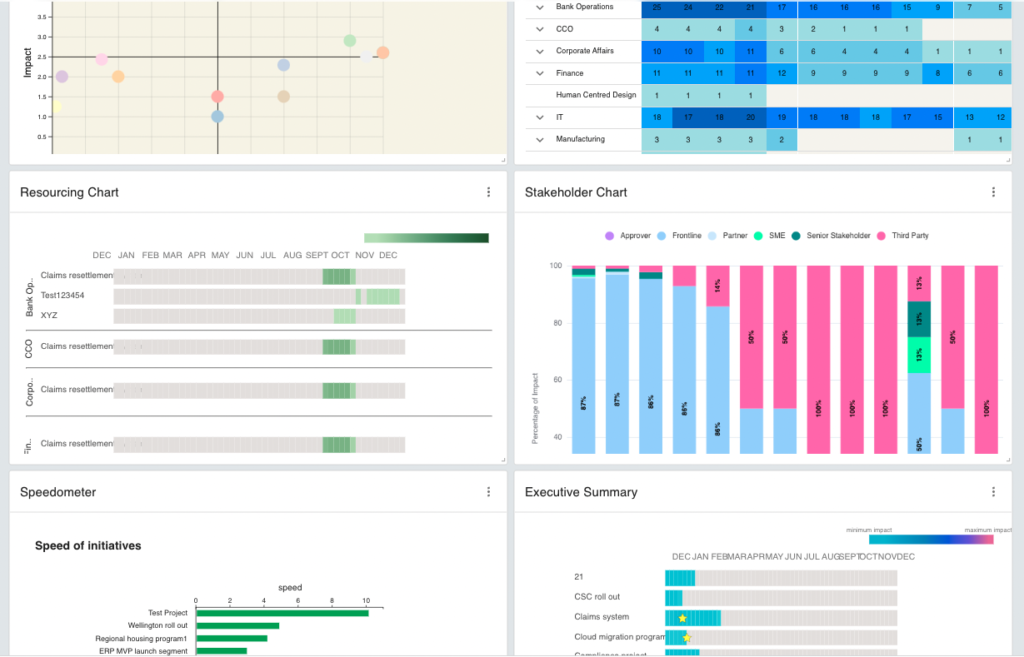Change saturation is talked about as one of top key challenges facing organisations as the pace of change is dialled up. The pace of change has been increasing for organisations and does not show any evidence of slowing down. Several surveys have indicated the seriousness of change saturation for change practitioners and senior leaders. This includes several Prosci surveys that have indicated the importance of change saturation for a large percentage of companies. There is also plenty of articles that focus on change saturation.
But why is change saturation happening and what is the cause of it? Why is it not talked about in the past and why now?
Pace of technology change
We can see all around us that the pace of technology change is speeding up. In the 1980s most people did not have access to the computer. Now there are computing features and devices on our bodies, on our laps, on our desks, at every shop and office, etc. In fact, it is hard to think of a world where these features are taken away from us. Not just Generation Z, but most of us in other generations would also agree.
The role of AI and machine learning of late has driven significant investment and change in organisations. This involves the power of AI to improve productivity and carry out existing work tasks at a significantly improved quality and pace than was previously imaginable. There are not many large organisations that are not leveraging this as a competitive differentiator.
Pace of innovation
Though technology has driven massive change at an increasing speed in impacting our lives, a key call out on top of this is the pace of innovation. Technical changes are only valuable if they are used by people. The ability for us to apply technical advancements to a wide range of human needs is what creates innovation. Techology firms are constantly looking for ways to improve the human experience. Now, we are seeing this driven by hundreds of millions of startups around the world. This is the latest force that challenges existing ways of doing things to reinvent and improve existing business models and improve how we work and live.
Culture lag
“The term cultural lag refers to the notion that culture takes time to catch up with technological innovations, and the resulting social problems that are caused by this lag. In other words, cultural lag occurs whenever there is an unequal rate of change between different parts of culture causing a gap between material and non-material culture.” (Wikipedia).
Some organisations and industries are running faster to take up, transform and reap the benefits of change. Technology firms tend to move fast and used to significant transformations in business models and ways of working. Other organisations may be less effective and change at a slower pace. Even within organisations, some departments seem to be faster at adopting change than others. The organisational culture differences can be quite stark. The leadership capability, the mindset, hierarchy structures, the operational processes, levels of agility and work approach all make up the cultural behaviours between the haves and have nots.
This is what differentiates successful organisations compared to those who are less successful … the ability adapt and change quickly to keep pace.
Large companies are by design siloed
Large organisations are by design a series of siloed departments. Depending the organisation structure it could be that each department is a separate kingdom with very different cultural traits and ways of working than other departments. Or, it could be countries that are operating differently. It could also be vertical or functional lines of grouping employees that shape the way people work.
Yes, there are ways in which large organistions can be designed to be less siloed. For example, through having the right operating and alignment processes across departments and teams it is possible to reduce this silo. Centres of excellence groups can act to connect disparate functional workers across the organisations without a formalised reporting structure. For example, Business Analysts that may sit in different departments. Having the right town halls or sharing forums can also help to share the work across a large number of teams. Some multinationals are particularly good at doing this to share best practices and reduce waste.
Irrespective of how large organisations are structured, for most, initiatives are driven by project teams. Each project team has its own challenges, stakeholders, budgets, timelines and business pressures. By design each project team is a silo. If there are 50 projects in an organisation then there are 50 silos. Even if all project teams report to one division, for example a transformation office, there are still challenges in ‘integrating’ the work across projects.
Now you can see why large organisations are really feeling the pinch in change saturation. With the increasing speed of industry and technology changes come an increasing number of changes in the organisation. The increased volume of change as well as increased speed of change results in the feeling of change saturation in employees. Sure, improved change capability can help in some situations in the uptake of larger volumes of change. However, people capacity is limited and there is only so much human change bandwidth within any given time.

The power of data in addressing saturation
Having a good initiative portfolio management system may help to connect the dots from a portfolio and project management perspective. Data provides visibility and shows the true picture of what is happening, allowing visualisation of what were only felt, into logical and precise factors of the what, why and how of the changes.
However, portfolio management systems only tend to focus on the picture from a project perspective. This includes:
- Project costs
- Project timelines
- Project resourcing
- Project benefits and tracking
However, what changes mean to the business and the organisations is a very different picture than what it means to project/transformation teams. The picture for the ‘receivers of change’ versus the ‘drivers of change’. Having a robust picture for the drivers of change (PMO, senior leaders, project teams, etc.) is critical and necessary. But it does not inform the organisation of what the journey looks like for employees to undergo the various changes in the organisations.
The picture of the ‘receivers of change’ is the picture that is required to examine if there is change saturation, the extent of it and what to do about it. This includes data such as:
- People change impact volume, severity, timeline
- The who, when, how, what of people change impact
- Type of people impact, whether employee, customer or partner impacts
Most organisations do not collect these types of data. Some change management teams manually create heatmaps to support this. However, they only capture a portion of the data listed above. Also, these are highly manual and usually not sufficiently robust to support the level of detailed required in business decision making on prioritisation and sequencing.
There lies the dilemma for large organisations. Significant amounts of investments are made in transformation. Significant benefits are anticipated. However, research shows that a lot of transformation efforts do not reach anywhere close to their targets. With increasing volumes of change, orchestrating the system across initiatives is key. And the missing link is in the people impact component to power the success of transformations through data.
By utilising digital means of capturing, farming and visualising change impact data, organisations can solve a range of business problems linked to change saturation. Data can inform and predict:
- Employee sentiments toward change
- People capacity
- Operational performance
- A number of project, business and benefit risks
- Change adoption and progress tracking
- Opportunity for better prioritisation and sequencing of releases
Using machine learning and AI it is possible to derive a range of powerful insights into key risks and opportunities that organisations may be facing with change. Risks linked to business performance and capacity challenges is usually top of mind for companies as a mere few percentage points drop in performance could mean tens of millions of dollars in value lost. The other important factor is risks and opportunities linked to benefit realisation across the initiative portfolio. With the right orchestration and sequencing balance, the overall initiative benefits can be optimised.
To read up more about managing a change portfolio, check out our article The Ultimate Guide to Managing Change Portfolio.
If you would like to discuss more about how to leverage digital solutions to solve change saturation risks click here.






